
33 minute read
NGĀ TĪPUNA I TAMATEA
Nā HELEN BROWN
around 1pm on sunday, 28 march, 1773 a small waka unua with carved taurapa and tauihu glided out of Te Unu-o-Momotu (Cascade Cove), the narrow bay on the south side of the entrance to Tamatea (Dusky Sound). As the waka rounded the point it came to a standstill as the eight kaihoe (paddlers) stared in amazement. Two days prior, the Resolution had slipped quietly into the fiord and anchored at Whetū (Pickersgill Harbour), a small sheltered bay to the north of Te Unu-o-Momotu. For 30 minutes the visitors on the strange vessel with tall masts and sails tried to entice them aboard. Eventually, as rain started, the kaihoe turned and paddled away. So began the encounter between our southern tīpuna, Captain James Cook, and the crew of the Resolution.
Advertisement
In following weeks, gifts, knowledge, and food were exchanged. While these experiences were no doubt profound for the tīpuna involved, when the Resolution departed six weeks later, it left barely a trace on our tribal memory. The visit was not inconsequential, but the benign nature of the actual encounter means that Cook has never loomed large in our tribal histories.
Right: Waterfall in Dusky Bay with Maori canoe, 1776, by William Hodges. Purchased 2019 with assistance from Lottery Grants Board,
Tuia Encounters – 250 Fund. TE PAPA (2019-0003-1).

Above: Many of the place names of Tamatea have been researched and recorded by Kā Huru Manu, the Ngāi Tahu Cultural Mapping Project. Kā Huru Manu is dedicated to mapping the traditional place names and associated stories within the Ngāi Tahu rohe. Access Kā Huru Manu, the digital Ngāi Tahu Atlas, online at kahurumanu.co.nz
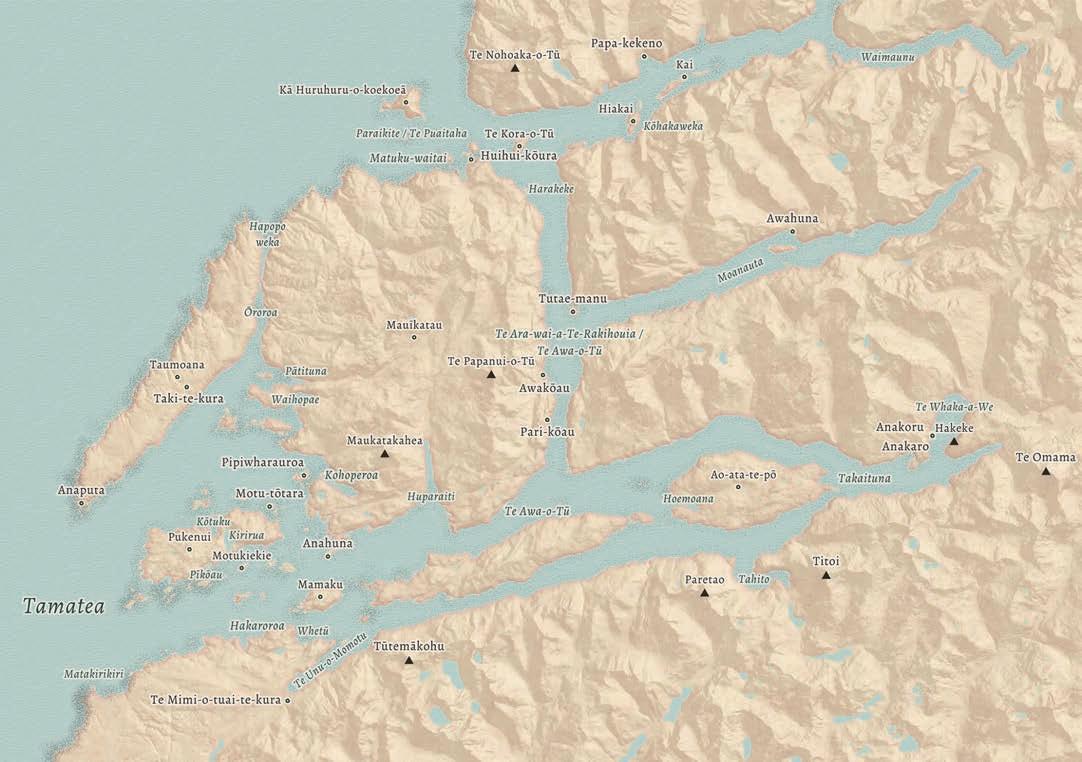
Last year marked the 250th anniversary of Cook’s first arrival on the shores of Aotearoa. As communities around the country debated, commemorated, protested or ignored the occasion, Ngāi Tahu whānui could be forgiven for a degree of ambivalence. While we collectively acknowledge the mamae of all iwi, hapū, and whānau whose interactions with Cook had immediate and devastating consequences, including the loss of life, Cook’s arrival in New Zealand was of little direct consequence to the tangata whenua of southern Te Waipounamu. During his 1769-70 circumnavigation of New Zealand, Cook sailed the Endeavour down the eastern seaboard of ‘Toai Poonamoo’, around the southern tip of Rakiura and up the West Coast, but had no interaction with our people.
En route, he erroneously mapped Te Pātaka o Rākaihautū as an island (Banks Island, later Banks Peninsula), assumed Rakiura was part of the mainland, and failed to sight our tribal maunga Aoraki, although his name was later memorialised in the English name ‘Mount Cook’, assigned to the mountain by Captain John Lort Stokes in 1851. Despite these oversights, Cook’s careful and detailed charts are otherwise extremely accurate, and comprise the first complete European map of the coastline of the Ngāi Tahu takiwā, indeed the entire country. In mid-March 1770, shortly before the Endeavour departed our waters, Cook sighted Tamatea, the largest fiord in New Zealand. It was dusk, and too late to attempt taking the Endeavour closer, but when Cook returned to New Zealand three years later on his second voyage in the Resolution, he determined to investigate the place he had marked on his map, somewhat unimaginatively, as ‘Dusky Bay’.
For Ngāi Tahu, the fiords of Te Rua o Te Moko (Fiordland), including Tamatea, represent the raised-up sides of Te Waka o Aoraki. The waka foundered on a submerged reef and its occupants, Aoraki and his brothers Rarakiroa, Rakiroa, and Rakirua, were turned to stone. They stand now as the highest peaks of Kā Tiritiri o te Moana (the Southern Alps). The fiords at the southern end of the alps were hacked out of the raised side of the wrecked waka by Tū Te Rakiwhānoa, in an effort to make it habitable for humans. The deep gouges and long waterways that make up the fiords were intended to provide safe havens on the rugged coastline, and were stocked with fish, forest, and birds to sustain travellers. For centuries before the mooring of the Resolution in 1773, our tīpuna ventured around the coastline to Tamatea during late summer and autumn on sealing, birding, and fishing expeditions. This history is borne out in the archaeology and place names recorded there. Today, our Ngāi Tahu fishermen, hunters, kaitiaki, conservationists and artists continue to have a close relationship with Tamatea.
While Cook’s sojourn in the autumn of 1773 is not recorded
For Ngāi Tahu, the fiords of Te Rua o Te Moko (Fiordland), including Tamatea, represent the raised-up sides of Te Waka o Aoraki. The waka foundered on a submerged reef and its occupants, Aoraki and his brothers Rarakiroa, Rakiroa, and Rakirua, were turned to stone. They stand now as the highest peaks of Kā Tiritiri o te Moana (the Southern Alps).

Left: Tamatea (Dusky Sound). Māmaku (Indian Island) is in the centre of this photograph with Whetū (Pickersgill Harbour) in the foreground to the right and the entrance to Te Unu-oMomotu (Cascade Cove) in the foreground to the far right.
PHOTOGRAPH: TONY BRIDGE / TE RŪNANGA O NGĀI TAHU COLLECTION, NGĀI TAHU ARCHIVE, 2018-0311
in southern Māori traditions, the journal accounts left by the crew of the Resolution provide small but revealing insights into the lives of the tīpuna, then living in this remote fiord. These include accounts penned by Cook, British mathematician and astronomer William Wales, and Georg Forster, the young German naturalist and ethnologist who accompanied his father, Johann, on Cook’s second voyage to the Pacific. Other accounts were written by English naval officer Richard Pickersgill, midshipman Bowles Mitchel, and Swedish naturalist Anders Sparrman, who was an assistant to the Forsters. While framed entirely from European perspectives, and therefore needing a critical read, these accounts include valuable observations on food preparation and descriptions of garments, wharerau and waka, and the earliest attempt at recording the southern mita (dialect). Most importantly, perhaps, the journals capture a sense of the personalities of the tīpuna involved, evoking their beliefs and values, and illustrating their overwhelming curiosity.
The detailed whakapapa of the tīpuna encountered by Cook at Tamatea is unknown. None of the journal accounts record their names although several researchers – mostly Pākehā – have creatively surmised their identities in the years since. While they may be anonymous, several sketches and paintings of these tīpuna exist. Produced by William Hodges, the official artist aboard the Resolution, these artworks constitute the earliest depictions of southern Māori by a European artist. Among the works is an oil painting acquired by Te Papa Tongarewa in 2019 – Waterfall in Dusky Bay with Maori canoe. This portrays a romantically rendered scene in Tamatea with a cascading waterfall, mountainous backdrop, moody waters, and luminous cloud formations. A small waka unua is being paddled in the foreground. According to Wales: ‘The canoe was composed of two small ones, hollowed out of a tree each, and fastened to one another about a foot asunder by cross pieces, which were lashed to both with bandages made of the hemp plant as we called it. The stems and stern posts rose much higher than the body of the canoe and the head was attempted to be carved like the upper parts of a man and two limpet shells were put for the eyes.’
Following their initial sighting of the Resolution, the tīpuna residing at Tamatea allowed another week to pass before making further contact with the visitors. In the meantime, Cook went in search of them. He discovered their waka hauled up on the beach in Te Unuo-Momotu where he observed harakeke fishing nets, fishhooks, and several fish, ‘raw and broiled’ nearby. Wales described two ‘hutts’ nestled in the bush that were ‘four or five feet high, and nearly the same breadth’. Made of bark and harakeke, they were ‘round on the top like an arched vault and were built in the thickest part of
Above: Family in Dusky Bay, New Zeland, 1777, hand-coloured engraving by Daniel Lerpiniere
after William Hodges. Gift of Horace Fildes, 1937. TE PAPA (1992-0035-1773).

Group portraits of this family were later depicted in a series of engravings, which detail the tao held by the women, the taiaha leant on by the kaumātua and the patu parāoa secured at his waist. The garments worn are also suggestive of the ‘ahou’ (kāhu huruhuru or feather cloak) and ‘buggy-buggy’ (pake or rain cape) described by Wales. The whānau showed the visitors their wharerau and exchanged gifts.
the bushes.’ These were, of course, wharerau, the traditional temporary dwellings ubiquitous in southern Te Waipounamu. The kāinga nohoanga (campsite) was deserted, so Cook and his crew departed, leaving gifts inside the waka unua including a hatchet, a glass mirror, medals, and other trinkets. Cook returned daily to the site, hoping to catch another glimpse of the tangata whenua.
Then, on 6 April, a bearded kaumātua initiated further contact when he hailed a boatload of Cook’s men as they returned from a bird-shooting expedition. Wielding a taiaha and flanked by two women holding impressively long tao (bird spears), the man stood on a prominent point on the shores of Māmaku (which Cook named Indian Island) and challenged the visitors to approach. Drawing on the ethnographic knowledge he gained in earlier encounters with Māori, Cook threw handkerchiefs in a gesture of peace, and then stepped ashore, offering the kaumātua pieces of white paper. The two men then greeted each other in a hongi, and the wāhine stepped forward. Others from Cook’s party joined them ashore, including Hodges who immediately started sketching their ‘countenances’ in red chalk. The tīpuna described him as ‘tuhituhi’, a mark-maker (painter). Communication between the two parties proved difficult. However, the younger of the two wāhine completely dominated the ‘conversation’ leading Forster to write that her ‘vociferous volubility of tongue exceeded everything we had met with’. Other accounts of this episode concur, pointing to the familiar and enduring power of mana wāhine in southern Te Waipounamu!
The next day a group from the Resolution returned to Māmaku and met the entire whānau which comprised the kaumātua, two women (understood by Cook to be his wives), a young woman (possibly his daughter), a teenage boy, and three or four small children. Group portraits of this family were later depicted in a series of engravings, which detail the tao held by the women, the taiaha leant on by the kaumātua and the patu parāoa secured at his waist. The garments worn are also suggestive of the ‘ahou’ (kāhu huruhuru or feather cloak) and ‘buggy-buggy’ (pake or rain cape) described by Wales. The whānau showed the visitors their wharerau and exchanged gifts. As Cook’s crew prepared to leave, the kaumātua indicated his desire for Cook’s full-length red woollen boat cloak. That night the Resolution’s sailmaker made a new cloak to order, and Cook presented it the next day. Forster wrote: ‘The captain wore the new cloak of baize on his own shoulders, and now took it off and presented the man with it; he, on his part, seemed so much pleased with it, that he immediately drew out of his girdle a pattoo-pattoo, or short flat club made of a great fish’s bone, and gave it to the Captain in return for so valuable an acquisition’.
In the following days the whānau approached the Resolution and set up camp on the neighbouring shore, where they prepared meals, and sometimes stayed overnight. Members of Cook’s crew played the fife and bagpipes and beat a drum, but the tīpuna were largely unmoved. The kaumātua seemed most intent on obtaining one of the ship’s tenders that he watched closely as they plied between the Resolution and shore. Wales noted the man ‘seemed almost continually lost in wonder at the construction of the ship and boats and whenever any of them came near him he examined them in the strictest manner, particularly how they were put together.’ His interest in the technologies proffered by the visitors was also borne out in his personal testing of a pit saw and musket, and his keen acceptance of hatchets and spike-nails as gifts.
Original drawings by William Hodges. Above left: A Maori man, holding a hatchet; WL standing to r. 1773 Red chalk, over graphite. Above right: A Maori woman, carrying a child in a sling over her back. 1773 Red chalk, over graphite.
© THE TRUSTEES OF THE BRITISH MUSEUM
Eventually he and his daughter gained confidence to board the tall ship. After delivering a requisite karakia, the pair stood on the quarter-deck and admired all they saw. Cook remarked that the ship’s company did not occupy the man’s attention as much as the ship’s deck on which he repeatedly stamped his feet, apparently testing its strength. They spent the whole morning aboard and Wales recorded they ‘visited every part of the ship with which they seemed much delighted; but most particularly so with a few sheep which we had yet left; and the cats’, whose fur they insisted on stroking backwards. Around noon, the man and his daughter departed and the entire whānau was not seen again. Cook and his men later encountered another group of equally curious tīpuna on a duck-shooting expedition in another part of the fiord. However, they did not enjoy the same prolonged interaction.
On 29 April, the Resolution weighed anchor at Whetū, and began a staged departure from the fiord, eventually sailing out of Tamatea on 11 May. A detailed map of ‘Dusky Bay’ was published by Cook in 1777, marking the way for the first sealing gang who landed at Tamatea in 1792. Other sealers followed, and whalers came in their wake. Southern Te Waipounamu was never the same. As for the tīpuna who met Cook, we have no clue to their precise identity, but as Tā Tipene O’Regan said: ‘Kāi Tahu today are the inheritors of whatever dreams they had.’
Tamatea: He Tūtakinga Tuku Iho | Legacies of Encounter exhibition at Te Papa Tongarewa presents Hodges painting ‘Waterfall in Dusky Bay with Maori canoe’ in conversation with taonga and artworks. Te Papa worked with Ngāi Tahu ki Murihiku and the Ngāi Tahu Archive team to develop the content for the exhibition which is on now at Te Papa.
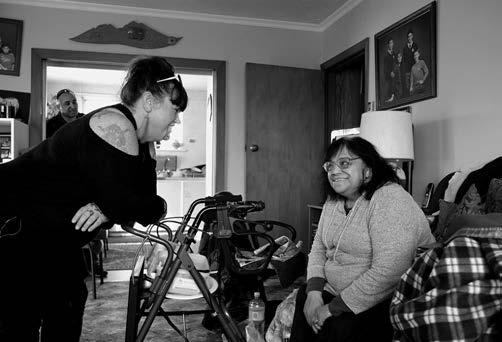

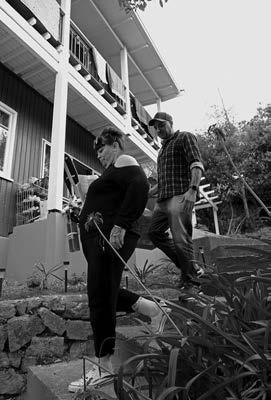
PHOTOGRAPHS AND WORDS Nā PHIL TUMATAROA Te Ao o te Māori
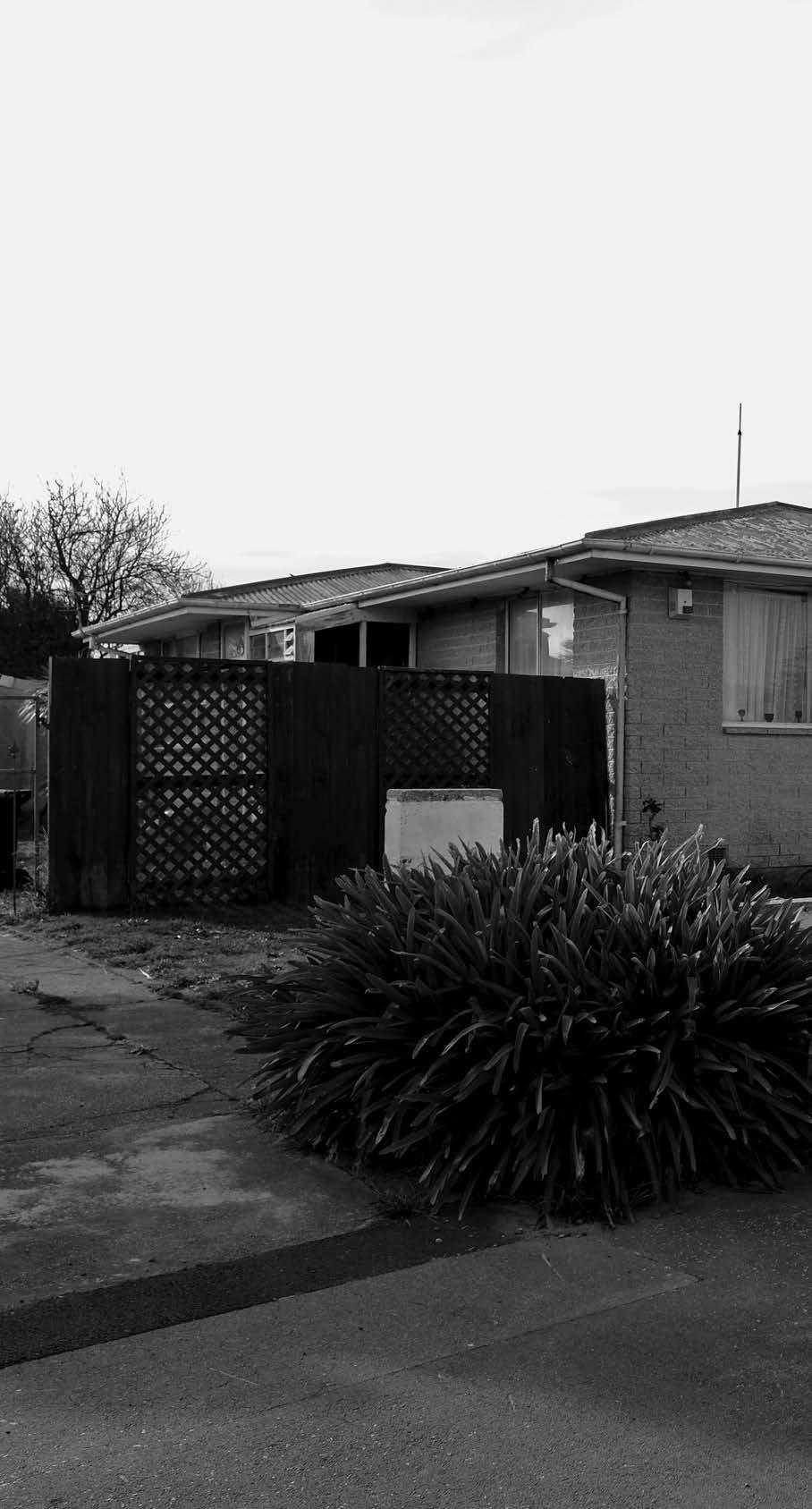
A WINDOW INTO THE RICH LIFESTYLES OF CONTEMPORARY MĀORI
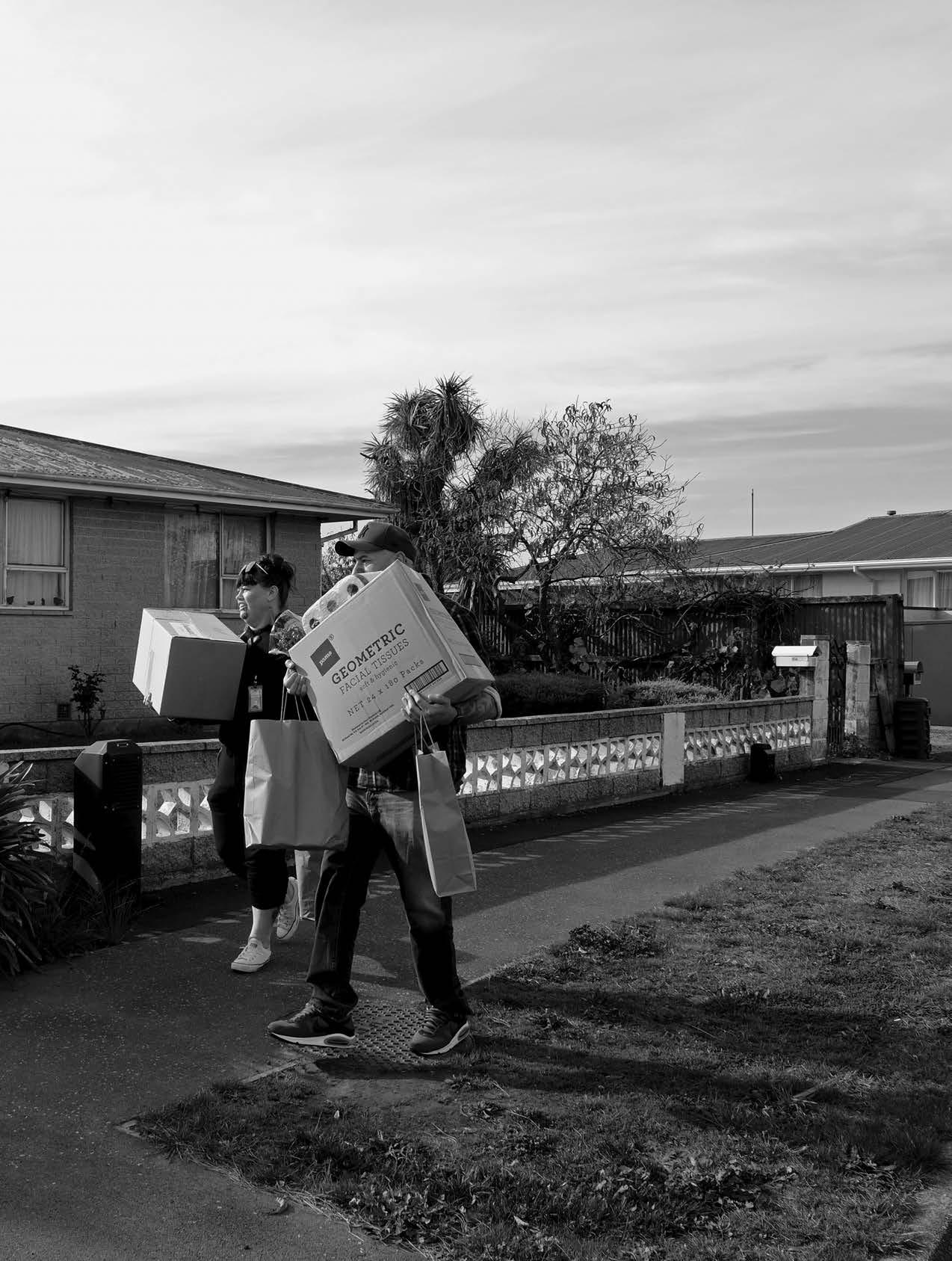
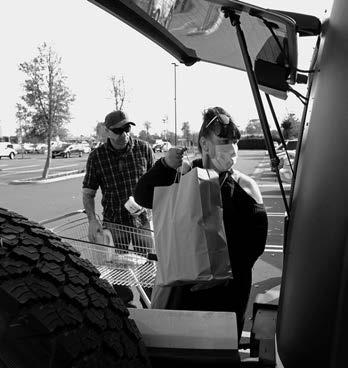


When COVID-19 brought the world to a standstill it required some people to strap up their boots and get busy. Waikura McGregor (Waitaha, Māmoe, Kāti Wheke) was one of those people who, protected by a mask and rubber gloves, was out in the community supporting whānau.
Waikura is a Whānau Ora Navigator with Hei Whakapiki Mauri, an Ōtautahi-based organisation which supports Māori, and their whānau, living in the community with disabilities.
As part of the pandemic response her partner, Billy Willis (Ngāti Wairere), was also employed as one of 25 new Manaaki Navigator roles by Te Pūtahitanga o Te Waipounamu, and together they have spent a hectic lockdown ensuring whānau are safe in their homes and their immediate needs are met.
“We got busy two weeks prior to lockdown,” says Waikura. “We were watching China and Italy and starting to prepare our own immediate whānau, as well as our whānau members for what was to come.”
On top of the 100 or so regular clients Hei Whakapiki Mauri supports, Waikura and

Billy had daily referrals from Te Pūtahitanga, which included isolated kaumātua, whānau with disabilities and complex cases.
They have had to deal with many problems including homelessness, helping people open bank accounts, obtain identification, housing, providing kai and cleaning products, accessing medications and health issues.
“Fear and anxiety has been really big – whānau mental health has been affected. We’ve been working with a lot of different agencies including the Ministry of Health, the district health board, NZ Housing and Police,” says Waikura.
A local kuia showered three days a week at the swimming pool due to mobility issues preventing her using her home shower.
“Due to lockdown she couldn’t shower and clean herself. We ended up hiring a mobile shower and we’re doing advocacy work to get her what she needs at home. There’s a lot of sad stuff out there in our community – and I’m glad in some ways that COVID has been able to highlight Whānau Ora, to give it the mana it deserves”.

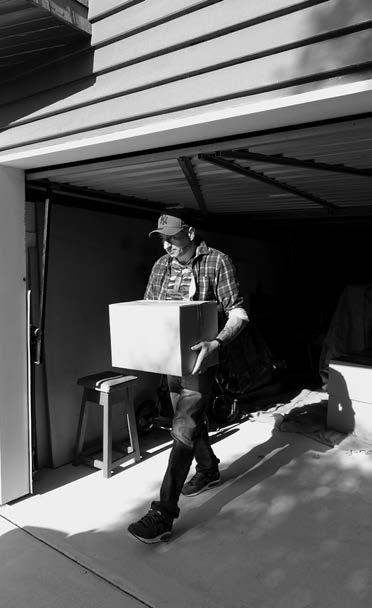
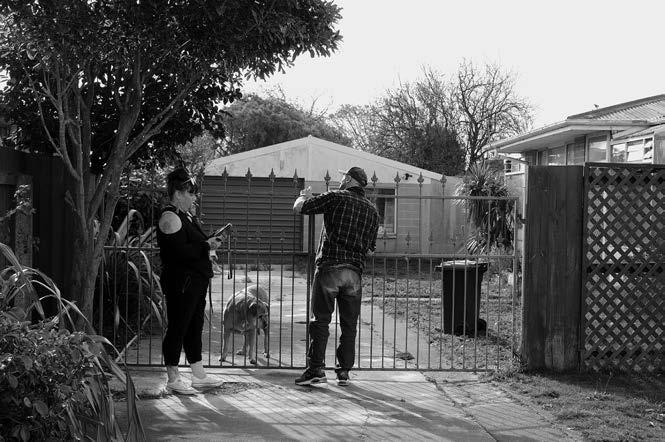

HEI MAHI MĀRA A beginner’s guide to growing organic vegetables nā TREMANE BARR
Kai to Power up the Immune System
It has been a strange and somewhat frightening start to 2020 with the release of COVID-19 (SARS-CoV2) casting a dark shadow across the world.
As we look to the night sky for the return of Matariki (July 13-16) and a new year, I think it is important to focus on what we can do to empower ourselves. It’s not enough to set up roadside checkpoints to discourage unnecessary travel as seen in previous lockdown levels – we all need to take responsibility for our own health to ensure our body’s immune system has everything it needs to deal with any virus that might come our way. Key Nutrients There are certain key nutrients our bodies need to work optimally, particularly when


it comes to warding off colds and influenza viruses. First and foremost is adequate levels of Vitamin D. Studies show the elderly are particularly susceptible to chest infections when they have low levels of Vitamin D. A recent study discovered: “The most vulnerable group of population for COVID-19 is also the one that was the most deficient in Vitamin D.”
A Government website points out those who live in Te Waipounamu in the winter, and have a darker skin colour (i.e. Māori), are more at risk of Vitamin D deficiency.
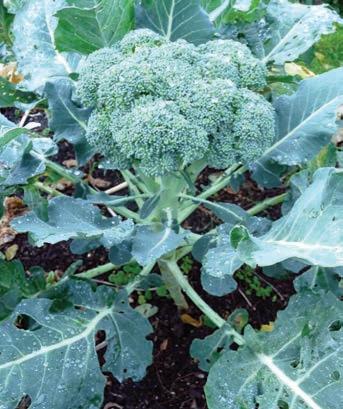
Above: Broccoli is a good source of Vitamin C; left: Winter lettuce in a cloche; top right: Autumn kūmara harvest.
This is because the primary source is being exposed to sunlight. So any lockdown level recommendations to stay at home should come with a warning to make sure we all get outside and get real sunshine on our bodies when we can.
The next best option comes from food and/or supplements and here is a list of some of those sources: • FISH: Tuna, sardines, herring and salmon are well known sources of Vitamin D, but also warehou and eels. In fact eels are a powerhouse of nutrition as they are also very high in Vitamin A and B12, also crucial to good health. Then, of course, there are fish oil supplements that contain Vitamin D. • MEAT: Lean meat and organic free-range eggs e.g. a dish of scrambled eggs using two large hen eggs contains 15% percent of a person’s recommended daily intake. • DAIRY: Yoghurt naturally contains
Vitamin D and some milk and yoghurt products are fortified with added
Vitamin D. • PLANT: Mushrooms like raw maitake, dried shiitake and portobello and white mushrooms, particularly if they have been exposed to sunlight.
Zinc is a crucial mineral to incorporate in your diet and can also be found in seafood (especially oysters which also contain B12), lean red meat, chicken, wholegrain cereals, beans, lentils, seeds and dairy. The only vegetables with any meaningful amounts of zinc are potatoes and kale.
Vitamin A is another key foundation to a healthy immune system. I have read that Vitamin A has been used to help people recover from the effects of COVID19. Vegetables are a vital source – carrots, bok choy, rocket, silver beet, squash, pumpkin, spinach, kale, lettuce, kūmara and watercress are recommended.
Not surprisingly, Vitamin C is also crucial and can be found in capsicums, bok choy, broccoli, brussels sprouts, cabbage (white and red), cauliflower, silver beet, spinach, garlic, kale, potatoes and watercress. I start each day with the squeezed juice from one lemon (or lime) in a glass of water with a bit of honey. Rosehip tea is also a powerful source of Vitamin C as are fruits like apples, kiwifruit and oranges.
A nutrient key to a healthy immune system is selenium. Our soils here are naturally low in selenium and this is one of the reasons we have such high cancer rates. Snapper and mussels are high in selenium as are mushrooms and garlic. The mineral fertiliser I put on my māra contains selenium for those vegetables that do take it up, even in trace amounts. However, in a situation like this where the need is immediate, the cheapest and easiest option is to eat two brazil nuts a day because they are the best selenium superfood.
There are a range of supplements
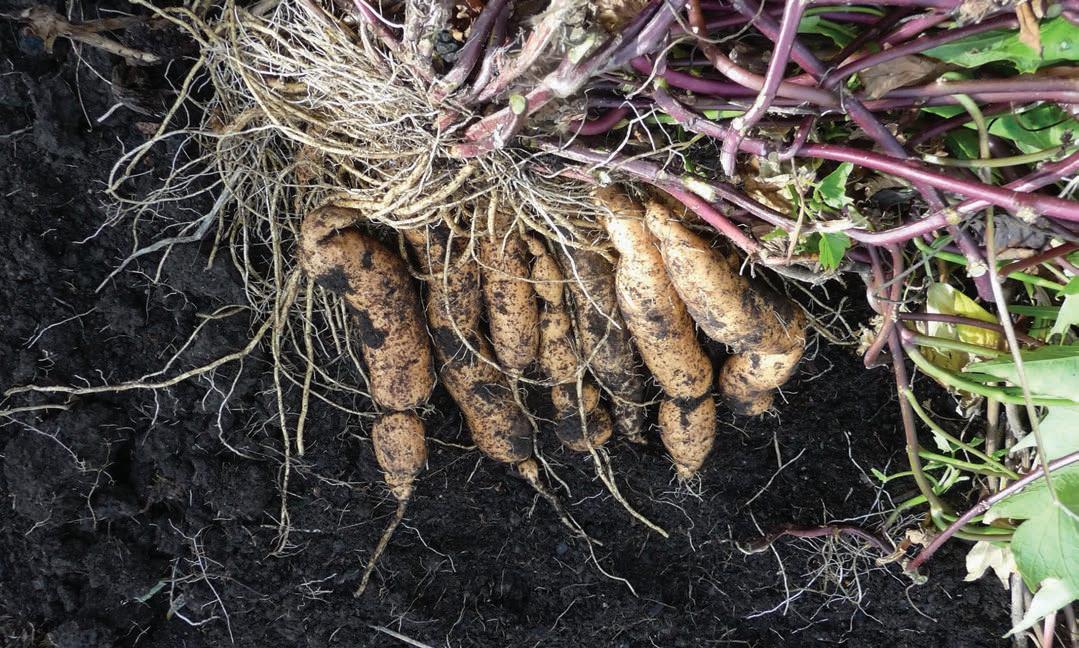
available for Vitamins A, D, C, zinc and selenium which I use when necessary, particularly in the cold and flu season. However, the best way to get these nutrients is via food because when you eat a rainbow of foods like those listed above you end up not just with the key ingredients listed, but a full range of all the nutrients necessary for maintaining a healthy immune system.
A friend of mine complained to his doctor after suffering a heart attack last year and undergoing surgery to correct it, that all his efforts to eat right, use supplements and exercise hadn’t paid off. To which his doctor replied that all those things had increased his chances of surviving the surgery and making a healthy recovery, which are typically very low for his type of condition. Because of these good health habits he beat the odds and is still very much alive and healthy today. Eating all the right foods, supplements and exercising in the sunshine may not stop you getting colds, influenza or COVID-19, but they will increase the odds of getting through any such illnesses without serious complications.
This pandemic can bring out the fear of death in all of us. The trick I found when I was diagnosed with terminal cancer was not to focus on whether I could die, but on whether I was doing everything I needed to do to be healthily alive and living a life I enjoy. This moves the nervous system out of fight or flight mode and into the parasympathetic relaxation, rest and repair mode which optimises the healthy functioning of our immune system. Tomorrow may be an unknown foreign land, but today is our moment of power – Tihei Mauriora!
The role of Vitamin D in the prevention of Coronavirus Disease 2019 infection and mortality
https://www.researchsquare.com/article/ rs-21211/v1
20 Minute Morning Qi Gong Exercise by Lee Holden
https://www.youtube.com/ watch?v=pj4qo2KL9f4
The Concise New Zealand Food Composition Tables
https://www.moh.govt.nz/notebook/ nbbooks.nsf/0/2fa2c987c25e81fecc25762c00 75a805/$FILE/Concise_8_Edition.pdf
Tremane Barr is Ngāi Tahu/Kāti Māhaki ki Makaawhio. He has been gardening organically for more than 30 years. Tremane is currently a self-employed mauirpreneur whose whānau owned and run business sells essential oils and natural skin care products containing native plant extracts: https://zurma.co.nz/
REVIEWS
TIME AND TIDE REVISITED
Nā Georgina Ellis Georgina Ellis 2020 RRP $89.00 Review nā Michael Stevens
Time and Tide Revisited focuses on Tini Rahou Rawaho (also known as Mere Te Kauri), her two husbands – James Spencer and William Shepard – and their descendants.
By way of brief context, Mere Te Kauri (1816-1876) is represented in one of the 12 large pou-tīpuna inside the stylistic whare-rau, Tahu Pōtiki, at Te Rau Aroha Marae. Dublin-born James (c. 1790s-1847), variously a sealer, whaler and trader, is commonly referred to as Bluff’s founding father. He arguably shares this honour with William Stirling and John MacGibbon who likewise married Kāi Tahu women and based themselves in Bluff from the mid-1830s, but even today the Spencer and Shepard families are a core component of the town. Thus, as Tā Tipene O’Regan observes in the book’s foreword, the Spencer whakapapa “is woven inextricably into the complex web of kinship that compromises Bluff to this day.”
The book’s author, Georgina Ellis (née Spencer), is a great-granddaughter of Louisa Te Memeke (née Coupar) and William Spencer, Mere and James’ second and youngest child. This book is therefore an “insider’s” history. She first published an earlier version, entitled Time and Tide, in 1999. That book’s subtitle was Ramblings, Recollections and Reminiscences of the Spencer Family. This hints at some of its strengths: interviews with key kaumātua over the preceding 20 years, rich anecdotes, personal records, and privately-held photos. These treasures, which were judiciously worked in with publicly available archival materials, have been carried over into Time and Tide Revisited. However, these are different books.
For starters, the newer book is – in every sense – larger. That is a result of
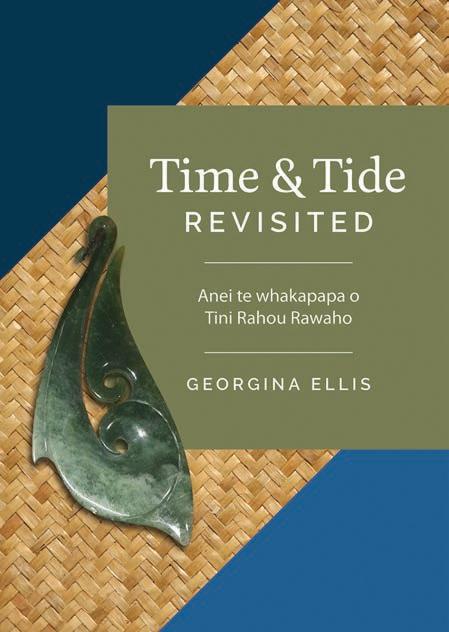
Georgina’s continuing research, in which she has benefitted immensely from online information sources: the so-called “digitalturn” in historical research. She has also received information from knowledgeable whanauka to fill in some of the gaps and errors found in earlier work. The newer book also hints at growing interest and capacity on Georgina’s part in the specifically taha Tahu and taha Māori aspect of this history, which is vitally important. Another motivation for updating this book – aside from the relative rarity of its predecessor and considerable demand for it – is the quite rapid growth in the Spencer and Shepard whakapapa. Toddlers in 1999 are now parents themselves. Young teens from that time are now taua and pōua.
In terms of structure, the book offers contextual biographies of Mere Te Kauri and James Spencer followed by overviews of their two sons and their respective families. A biography of William Shepard forms the penultimate chapter. The final chapter is dedicated to the various Tītī Islands visited by whānau members. Photo collages and detailed whakapapa tables then constitute the book’s back matter. Each of Mere’s three children – all sons – married Kāi Tahu women. This pattern of marrying Kāi Tahu spouses was common in subsequent generations, down to the present day. Time and Tide Revisited is thus a powerful corrective against generalisations – popular and academic – that place interracial marriage and European acculturation at the heart of Kāi Tahu life from the mid-nineteenth century. What we actually see are deep and enduring Māori rhythms: from matrimony to mahika kai and much more.
As such, while this is ostensibly a history of the Spencer and Shepard whānau, we see numerous linkages into, for example, the Bragg, Bradshaw, Goodwillie, Goomes, Fife, Haberfield, Karetai, Pōtiki, Te Au, Taiaroa, Te Maiharoa, Topi and Whaitiri whānau. Lest that be misunderstood as simply a function of geographical proximity, there are also marriages into the likes of Purākaunui, Arahura Pā, Arowhenua, Ōtākou and Moeraki. The patriarch of the Bluff-based Ryan whānau, for example, which is an enormous subset of the Spencers, comes out of Horomaka. Beyond the iwi, we also see some of the many Kāi Tahu marriages into Ngāti Kahungunu ki Wairarapa.
This book is anchored at Awarua. It offers rich and revealing windows into southern Kāi Tahu life on the coasts and waters of southern Murihiku. People who live seasonal existences in this part of
Michael Stevens is the Alternate Representative to Te Rūnanga o Ngāi Tahu for Te Rūnaka o Awarua. An independent historian, he is currently co-editing volume 2 of Tāngata Ngāi Tahu and completing a book on Bluff as the 2020 Judith Binney Fellow. Paula Rigby (Ngāi Tūāhuriri) is a skilled weaver, with many years of experience. She is currently Deputy Chair of Te Rōpū Raranga Whatu o Aotearoa (National Weavers Committee). Paula has been commissioned to make taonga pieces for international and national collections.
Te Waipounamu – think muttonbirding, oystering and fishing – see their friends, cousins, and themselves in this book. Outsiders who seek to understand this place and its people – one of New Zealand’s oldest communities and one of the world’s southernmost, as Tā Tipene also points out – could start with Time and Tide Revisited. In summary, this is a big and beautiful book for a big and beautiful Kāi Tahu family. And this is a big “thank you” to Georgina for pulling it together: aku mihi nunui e te whanauka!

TE MANU HUNA A TĀNE
Edited nā Jennifer Gillam and Eugene Hansen Massey University Press 2020 RRP $45.00 Review nā Paula Rigby
Have you wondered what happens to a kiwi when it dies? This book shows how the Department of Conservation (DOC) has worked with a group of weavers and local iwi to prepare the birds building up in the freezers of Te Papa Atawhai in the far north. Even in death New Zealand native birds are protected. This means at times the DOC freezers need to be purged. This book shows how one group of people came up with a solution, and proposed the intergenerational transference of mātauranga Māori.
The photographs document the wānanga and these are accompanied with the written stories of those involved. This includes DOC workers, weavers and participants who learnt the tikanga and techniques of plucking and skinning these taonga. The stories are written in different styles which can make it hard to read, but it is an excellent record of an approach to give life after death of one our most recognised and iconic symbols. The feathers of these birds will live again in a Kahu Kiwi one day.
AROHA’S WAY – A CHILDREN’S GUIDE THROUGH EMOTIONS
Nā Rebekah Lipp and Craig Phillips Wildling Books 2020 RRP $19.95 Review nā Allanah Burgess, Kaia Waaka (5) and Maika Waaka (4)
The opportunity to review this pukapuka could not have been better timed for our whānau. The world is changing, and our lives are too. We have just gone through a move from our home in Ōtautahi to Waikawa, straight into the lockdown of our country as we were trying to find our feet again. My tamariki are troopers but it has been difficult for them to leave their home and their friends to start over again and witness people they know go through some of the hardest times in their lives.
Aroha’s Way is beautifully written and easy to follow; although I expected it to be too advanced for my youngest, he was able to follow the messages and comment on how the book made him feel.
Aroha reminded me of my own daughter, with several similarities that Kaia even observed herself. The book was an emotional journey for her, and she could
Allanah Burgess (Te Āti Awa, Ngāi Tahu) is the Manager of Waikawa Marae, Picton and a proud māmā to her two beautiful tamariki Kaia(5) and Maika(4)Waaka. They have just relocated from Ōtautahi back home to Waikawa ki Te Tau Ihu. Kaia is a creative kōtiro who enjoys reading, art and role play. She has just found a new love for kapa haka and enjoys spending time with her whānau. Maika is very competitive and loves being outdoors, especially in, on, or around water.

Opinions expressed in REVIEWS are those of the writers and are not necessarily endorsed by Te Rūnanga o Ngāi Tahu.
REVIEWS
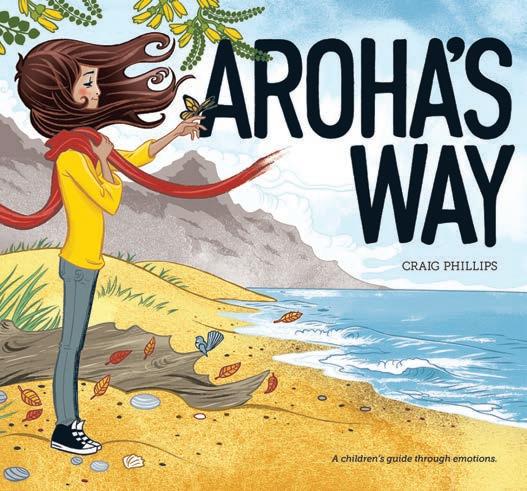
talk about the techniques Aroha was using to deal with her emotions.
Maika is not reading yet, but loves being read to. He likes flicking through the pages when we are done and telling me about his understanding of the story through the pictures. Credit to the illustrator as he was able to use these to share his thoughts and feelings and relate them to Aroha.
Kaia thought it was very clever how Aroha was the name of the character, saying: “It is a perfect adventure for Aroha to go on because her name means ‘love’.’”
Parts of the story also reminded Kaia of a princess – I think that may have been because Aroha is from the Southern Isle and she was frozen with fear – Kaia and Maika are also massive fans of the movie Frozen.
We were able to stop and talk through the story, and discuss techniques Aroha uses, for example, taking a breath and blowing all the air out. Kaia said she likes to do the same when she is scared or frustrated.
Tamariki often find it difficult to deal with the emotions that were referenced in this book and I know that as a parent I struggle to explain them and guide my babies through these in a way they will understand. Thank you!
Aroha’s Way reminds us as parents to keep talking, sharing, playing and just being present in the lives of our tamariki. The story has sparked more conversations around having a safe place and people to talk to, sharing our feelings, asking pātai and being able to build on Aroha’s Way to compare it to our way and how we might incorporate the best of both.
I believe a lot of whānau would benefit from this pukapuka as it emphasises that we are not alone and we can get through whatever is troubling us. It is a fantastic resource for all ages!
The back of the book also gives advice on coping with specific emotions and ways of explaining them. It provides a fantastic list of helpful numbers, websites and strategies for parents and youth.
Kaia would like to give Aroha’s Way a very big 600 stars! “Because it shows us that it is normal to have these feelings – just like Aroha and that it’s OK. We are not alone.”
Let us just say our whare has now created a new way to deal with emotions that works for us … Ngā mihi ki a Rebekah Lipp rāua ko Craig Phillips, and Aroha’s Way.
AUKAHA
I First Heard Woody Guthrie At Moeraki
nā Rangi Faith
I first heard Woody Guthrie at Uenuku – we were leaving and there was no going back –it was the hour, and it was the time to say goodbye; soon we would be sailing – I thought it was the bus but they sang about a boat going far across the sea; there was a sadness and a slow shuffle to a door that stretched high into the clouds, and I the height of each black tire dressed in an oversized coat, but warm; I followed – a hand on my shoulder – then onto the bus and up to the windows & a line of faces, & a chorus of voices singing – so long, as the bus moves, so long to the urupā so long to the marae, so long to the people – and once we hit the main road and turn right to Arowhenua there is a deep silence that stretches and stretches with another sadness until a voice sings and we all join in.
TAONGA PŪORU nā Teoti Jardine
Shapes carved with perfection embrace the breath. Inviting us to celebrate, the voices of Te Ao Tūturu.
Aukaha is a regular feature that celebrates the creative talent of Ngāi Tahu whānau. If you would like to see your work (prose, poetry or visual arts) published in TE KARAKA, please contact us. BY EMAIL: tekaraka@ngaitahu.iwi.nz BY PHONE: 03 974 0177 BY POST: Te Rūnanga o Ngāi Tahu, PO Box 13 046, Christchurch 8141.
MAUI BRENNAN Ngāi Tahu – Ngāi Tūāhuriri
He Tangata
Maui Brennan (Ngāi Tahu – Ngāi Tūāhuriri) grew up in Ōtautahi in a bicultural household. Being of Italian and Māori whānau, Maui appreciates not only the similarities between his two cultures, but also the strong sense of identity that has blossomed from his upbringing. He has a passion for travelling and seeing the world beyond Aotearoa, and exploring the lessons to be learned from other cultures. At the end of 2019, Maui completed his Bachelor of Commerce, majoring in Finance and Economics, at the University of Canterbury. He is now preparing to study towards a Master of Science in Economic and Social Sciences at Bocconi University, Milan. Meanwhile, he is an intern at Tokona Te Raki, as a project facilitator.
WHAT CONSTITUTES A GOOD DAY?
For me, a good day definitely has to include sun and heat. There is nothing better than exercising or working outside. I would probably also add to that ice-cream, a BBQ, and then a binge watch on Netflix during the evening!
ONE THING YOU COULD NOT LIVE WITHOUT?
Wi-Fi! I feel like more than half of my day is spent on social media (Facebook, Instagram, Twitter and TikTok), Zoom meetings, and even watching my favourite shows on Netflix, or videos on YouTube. It is quite hard to imagine spending my day without going online at least once.
WHO OR WHAT INSPIRES YOU AND WHY?
People who overcome their limits, and dare to dream big. I see that in my whānau, in rangatahi today and in our iwi leaders. Doubt can be a huge obstacle when trying to create transformational change, and seeing visions being made possible despite the challenges only encourages me to go beyond my limits.
HIGHLIGHT IN THE LAST YEAR AND WHY?
Participating in the Te Hononga-ā-Kiwa trip to Japan. Not only did I enjoy having

the opportunity to meet other like-minded Māori students, but I also appreciated learning about Japan’s indigenous Ainu culture. There were striking similarities in the historical struggle that Ngāi Tahu and the Ainu faced. It really made me appreciate how far our iwi has progressed since the Treaty.
WHAT IS YOUR GREATEST EXTRAVAGANCE?
My hair. Ever since the lockdown, and without having a haircut for months, it amazes me how crazy it gets. Most people don’t see how crazy it is thanks to the massive amount of hair product I use to control it.
FAVOURITE WAY TO CHILL OUT? FAVOURITE PLACE?
Playing video games. I really enjoy playing open world role playing games such as Zelda Breath of the Wild. Just escaping from the real world for a bit is a great way to clear my mind and take time out from my usual responsibilities. My favourite place is definitely New Brighton Beach. It is my go-to place for a long run, but I have also made many memories there. New Brighton Beach is so underrated!
PHOTOGRAPH: SUPPLIED
DANCE OR WALLFLOWER?
Probably a mix of both. It really depends on who is there and the occasion – I can go from one extreme to another.
WHAT FOOD COULD YOU NOT LIVE WITHOUT?
Pizza. It is my perfect meal for a night out!
WHAT MEAL DO YOU COOK THE MOST?
On occasions I usually cook pizza or focaccia bread. I can’t get enough of bread – it is too good to pass up. (If I want to cook normally, usually grilled meat with vegetables.)
GREATEST ACHIEVEMENT?
Getting my ATCL piano performance diploma. It was a lot of hard work and effort to fine-tune my playing technique, and also to balance my academic and social life. So once I got it, I was ecstatic and relieved!
DO YOU HAVE AN ASPIRATION FOR NGĀI TAHU TO ACHIEVE BY 2025?
A greater presence in Te Waipounamu, especially in Christchurch. There is so much opportunity to solidify our presence in everyday city life. I’d want future rangatahi in 2025 to know that their iwi is there supporting them in their life’s journey.










